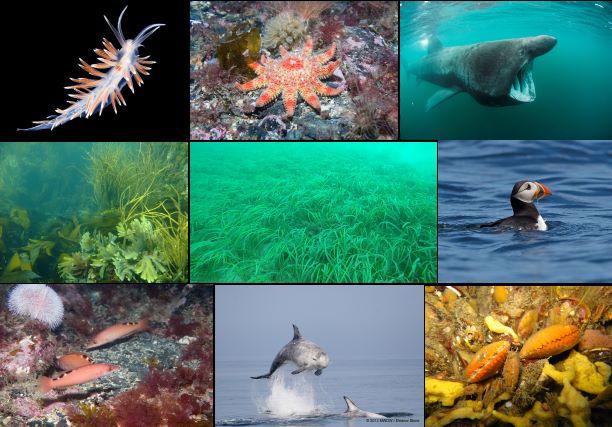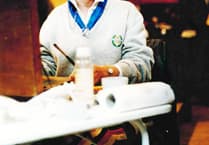As an island community we depend on the sea for so much - but it is also easy to take it for granted. In a new monthly column, Dr Lara Howe, marine officer with the Manx Wildlife Trust, and Dr Peter Duncan, senior marine environment officer at DEFA, explore this underwater world and the lives of some of those who work there.
The Isle of Man has a territorial sea nearly seven times bigger than the island itself, and our territorial waters extend 12 nautical miles into the Irish Sea.
We depend on the sea for food, transport, delivery of most of our other foods and fuel supplies, and so many of the goods that we use in everyday life all come via ferry.
It only takes a few days of bad weather to notice the shops shelves looking a bit empty.
Historically the island has always retained local control of the inshore three nautical-mile area, but in 1991 an agreement with the UK extended the territorial sea out to 12 nautical miles (22 km or 14 statute miles) and covering an area of 3,970 square km (or 1,533 square miles).
This development provided the island with ownership of the seabed, including minerals and hydrocarbons, as well as a role in the international responsibilities associated with jurisdiction over national waters.
It may surprise people to learn that the Isle of Man has responsibility over such a large area of sea, and that it comes with numerous international implications. It is also a very busy and biologically diverse area of sea.
Manx waters are home to a wide range of species and habitats.
As owners of the seabed, the Isle of Man Government has responsibility for managing marine infrastructure and resources, including electricity cables, gas pipelines, hydrocarbon resources (eg. gas) and, more recently, renewable energy projects, such as windfarms. These must also be considered in the context of neighbouring sea areas; since what happens there, may also affect us.
Fisheries are a significant cultural, social and economic activity in the Irish Sea, including in Manx waters. There are established fishing grounds for scallops and queenies around the island – which is a multi-million pound industry.
Pot fishing for crab, lobster and whelk also occur around the coast and further offshore. As such, fisheries operate over significant areas of the territorial sea, and their interests need to be taken into account in marine planning and management.
Under the Convention on Biological Diversity, and the island’s Biodiversity Strategy, we gave a commitment to protect at least 10% of our marine waters.
This was achieved in several stages; starting with various fisheries closed areas since 1989, the island’s first marine nature reserve in Ramsey Bay in 2011, and culminating in our current 10 MNRs, designated in 2018. Further details about our marine nature reserves can be found here; www.gov.im/MNR, and also the protected coastal sites, such as The Ayres National Nature Reserve and Areas of Special Scientific Interest (ASSIs) which form important links between the land and marine protected areas.
Our Marine Nature Reserves cover 430 square km (166 square miles) within the inshore 0-3 M area of the territorial sea (that’s 11%of the total sea area), and they form a network intended to link up specific habitats and enable populations of animals, plants and algae to either re-establish, recover, or thrive.
These include eelgrass areas, kelp forests, horse mussel reefs, delicate hydroids and their rare seaslug predators, seasnails ‘missing’ for 180 years, and clams that may have been around since the 1600s!
Marine conservation also helps protect our valuable fishing industry, and provides the basis for ecotourism, whether that’s whale and dolphin watching or twitching for sea and coastal birds.
But how do we go about identifying species and habitats that require protection? How do we introduce protected status, and how do we measure successful conservation outcomes?
What species do we actually have here, and what is their population status; are they increasing, declining or stable? What is being done to monitor and conserve them, and who does that work?
In this column over the following months, Lara and Peter provide a glimpse into some of these processes in the context of our local sea life and, in particular, the various groups of marine enthusiasts, both volunteer and professional, who provide the time, information and expertise that enables the Isle of Man Biosphere to be a place for nature, and for sustainable marine activities.




